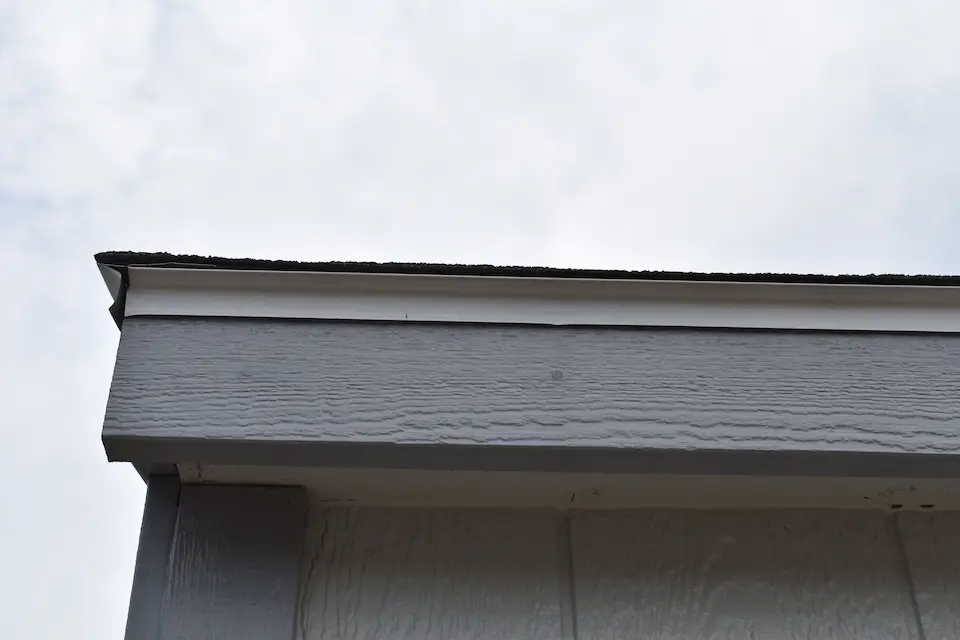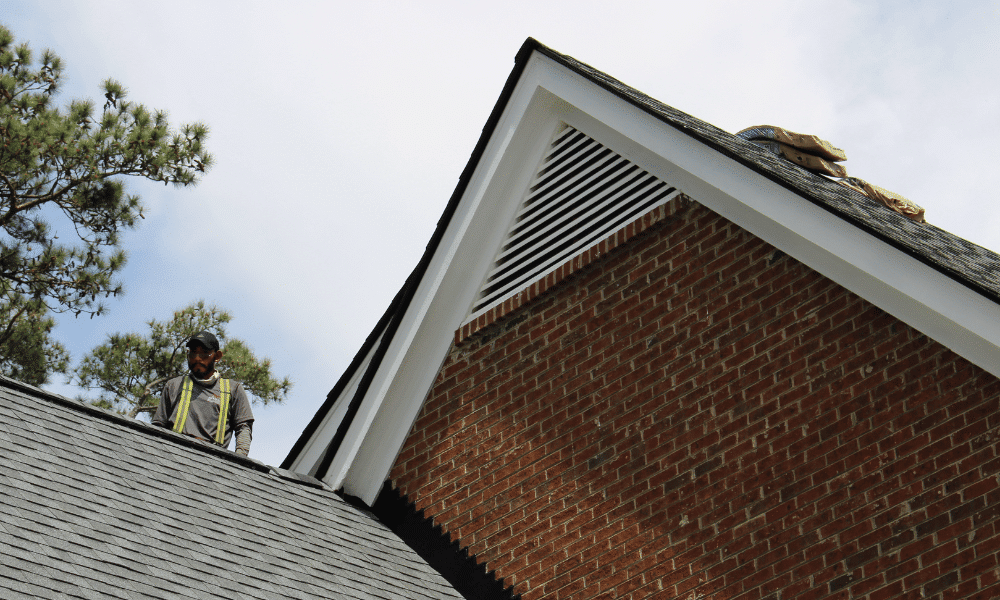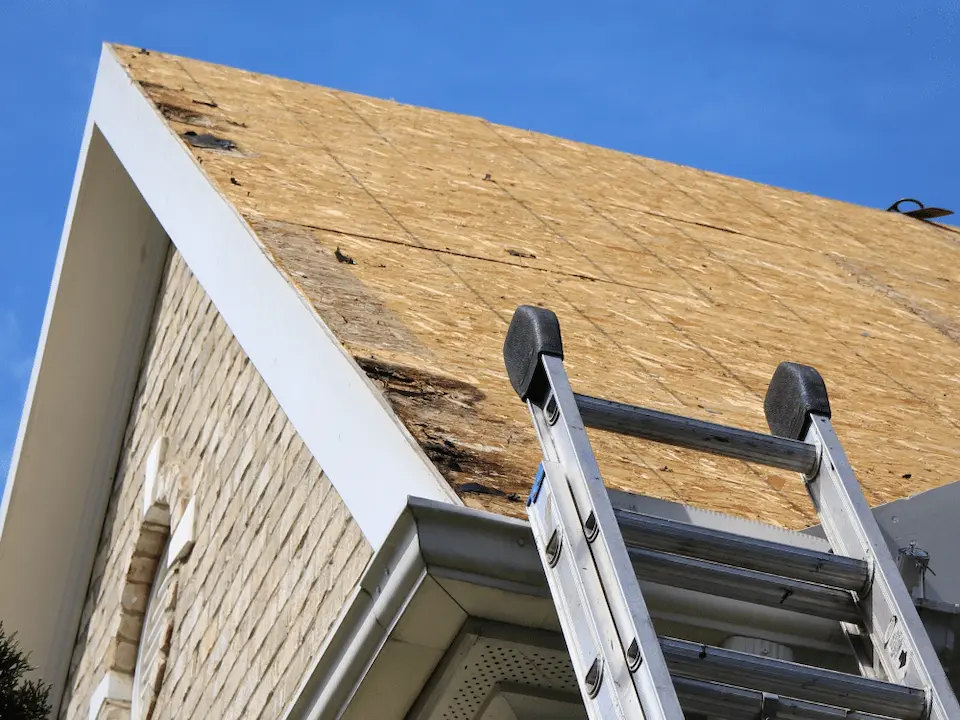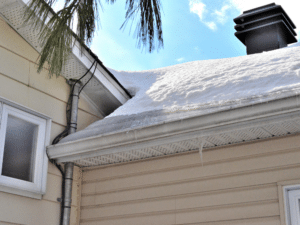
As a trusted Raleigh roofing company with expertise in delivering top-notch roofing solutions, we understand the importance of a well-maintained and durable shingle roof. At Artisan Quality Roofing, our shingle roof replacement experts are delving into one crucial element of a shingle roof: roof drip edges.
While they may seem like a minor detail, installing a roof edge drip is a tactic to safeguard your existing roof and preserve its integrity. Understanding the purpose of drip edge flashing can empower you to make sound choices for the longevity of your roof.
Understanding Shingle Roofs
Before we delve into the purpose of roof drip edges, it’s essential to have a basic understanding of a shingle roof system. A shingle roof consists of several key elements that work together to provide protection against the elements and ensure the longevity of your roof.
These components include:
- Shingles: Shingles are the outermost layer of the roof and serve as the primary barrier against rainfall, strong winds, and other environmental factors. They come in various materials such as asphalt shingles, wood, slate, or metal, and are designed to shed water effectively.
- Underlayment: The underlayment is a waterproof layer installed directly on the roof deck, beneath the shingles. It provides an extra layer of protection against direct water infiltration and helps prevent leaks.
- Roof Decking: The roof decking is the structural base of the roof, typically made of plywood or oriented strand board (OSB). It provides stability and support for the entire roofing system.
- Flashing: Flashing is used around roof penetrations such as chimneys, vents, and skylights to prevent water from seeping into the vulnerable areas where different roof components intersect.
Importance of Proper Installation and Maintenance of a Shingle Roof
Whether installing a new roof or repairing existing shingles, proper installation and regular maintenance are paramount to ensure the longevity and performance of your shingle roof. A roof that is installed correctly with quality materials can withstand the test of time and protect your home for many years to come. Conversely, a poorly installed or neglected roof can lead to costly repairs and damage.
It’s crucial to hire an experienced roofing professional, such as an Artisan Quality Roofing contractor, who has the knowledge and skills needed to perform a roof replacement or roof repair. Additionally, ongoing roof maintenance is essential to keep your shingle roof in optimal condition. Regular inspections, cleaning debris from the gutter, and addressing any issues promptly can help prevent small problems from escalating into major repairs while extending the lifespan of the roof.

What Are Roof Drip Edges?
Roof drip edges are essential components of a shingle roof that are designed to manage water runoff along the roof’s edge. A drip edge profile is typically made of thin, L-shaped metal strips that are installed along the eaves and rake edges of the roof, forming a protective barrier between the shingles and the fascia or the roof deck.
The L-shaped design of roof drip edges creates a small extended drip edge overhang beyond the edge of the roof. This overhang directs water away from the vulnerable areas such as the fascia board and the eaves, preventing water from seeping into the underlying structure and causing damage.
Commonly Used Materials for Roof Drip Edges
Roof drip edges are commonly made from durable and weather-resistant materials to withstand exposure to the elements.
The most common materials used for roof drip edges include:
- Aluminum: Called drip metal, aluminum roof drip edges are lightweight, corrosion-resistant, and easy to work with. They are a popular choice due to their affordability and longevity.
- Galvanized Steel: Galvanized steel drip edges offer excellent durability and strength. They are coated with a layer of copper and zinc to provide protection against rust and corrosion.
- PVC (Polyvinyl Chloride): PVC drip edges are resistant to moisture, rot, and insect damage. They are a suitable option for areas with high humidity or coastal regions.
Installing Drip Edges Properly
The proper installation and positioning of roof drip edges are crucial to ensure their effectiveness.
Here’s a general overview of installing drip edges properly:
- Preparation: Before installing the drip edges, the roof deck should be clean and free from any debris. The underlayment should be properly installed, and the shingles should be laid up to the edges of the roof.
- Eaves Installation: Starting at one corner of the roof, the roof drip edge is positioned along the eaves with the vertical leg extending downward and the horizontal leg overhanging the fascia. It is secured to the roof deck using nails or screws, ensuring a secure attachment.
- Rake Installation: The same process is repeated along the rakes of the roof. The drip edge is positioned with the vertical leg facing outward and the horizontal leg overhanging the edge. It is fastened securely to the roof deck.
- Overlapping: When installing drip edges, it’s important to overlap them at the corners to ensure continuous water runoff without any gaps.
Proper roof installation techniques may vary depending on the specific roofing system and local building codes. It is recommended to consult a professional roofing contractor, such as Artisan Quality Roofing, for expert installation and adherence to local regulations.
The Purpose of Roof Drip Edges
Roof drip edges serve multiple important purposes in maintaining the integrity and functionality of a shingle roof. Let’s explore the key benefits and functions of roof drip edges.
Directing Water Away from the Fascia and Eaves
One of the primary purposes of roof drip edges is to effectively manage water runoff along the edges of the roof.
By directing water away from the fascia and eaves, roof drip edges help prevent water-related issues such as:
- Preventing water damage to the roof structure: Without proper drainage, water can accumulate near the fascia and eaves, leading to water damage and deterioration of the underlying roof structure. Roof drip edges ensure that water is directed away from these vulnerable areas, minimizing the risk of structural damage.
- Reducing the risk of rot and mold growth: Excessive moisture accumulation near the fascia and eaves can create a favorable environment for rot and mold growth. Roof drip edges help channel water away, reducing the likelihood of these issues and promoting a healthier roofing system.

Protecting the Underlayment and Decking
Roof drip edges play a crucial role in protecting the underlayment and decking of a shingle roof.
Here’s how they contribute to maintaining a watertight and structurally sound roof:
- Preventing water intrusion beneath the shingles: During heavy rain or wind-driven rain, water can potentially penetrate beneath the shingles. Roof drip edges act as a barrier, preventing water from seeping under the shingles and infiltrating the underlayment, which could result in leaks and water damage.
- Preserving the structural integrity of the roof: Moisture infiltration can compromise the structural integrity of the roof deck over time. By directing water away from the edge and preventing it from saturating the decking, roof drip edges help maintain the stability and durability of the roof structure.
Aesthetic Benefits and Enhancing Curb Appeal
In addition to their functional benefits, roof drip edges offer aesthetic advantages that contribute to the overall appearance of your home:
- Creating a clean, finished look for the roofline: Roof drip edges provide a neat and finished appearance along the edges of the roof. They create a defined, crisp line that enhances the visual appeal of the roofline, giving it a polished and professional appearance.
- Improving the overall appearance of the home: By maintaining proper water drainage and preventing unsightly water stains or damage on the fascia and eaves, roof drip edges help preserve the attractiveness of your home. They contribute to the overall curb appeal, making a positive impression on visitors and potential buyers.
Proper Installation and Maintenance of Roof Drip Edges
To fully reap the benefits of roof drip edges and ensure their effectiveness, proper installation, and ongoing maintenance are crucial. Let’s explore the significance of these factors and why hiring a reputable and skilled roofing company is essential to the installation of your roof..
The Role of Professional Roofing Contractors
When it comes to the installation of roof drip edges, it is highly recommended to seek the expertise of professional roofing contractors, such as Artisan Quality Roofing.
Here’s why their involvement is essential:
- Experience and knowledge: Professional roofing contractors have the necessary experience and knowledge to install roof drip edges correctly. They understand the intricacies of the installation process, ensuring that the drip edges are positioned, attached, and sealed appropriately for maximum functionality.
- Compliance with building codes: Local building codes may have specific requirements regarding the installation of roof drip edges. Professional contractors are well-versed in these regulations and ensure that the installation meets the necessary code standards.
- Warranty coverage: Professional contractors often provide warranty coverage for their workmanship. By hiring a reputable roofing company, you can have peace of mind knowing that any issues related to the installation of roof drip edges will be addressed promptly and effectively.
Ensuring Correct Positioning and Attachment of Roof Drip Ddges
Proper positioning and attachment of roof drip edges are essential for their effectiveness.
Here are some key considerations:
- Overhang length: The horizontal leg of the roof drip edge should have an appropriate overhang beyond the edge of the roof. This ensures that water is effectively directed away from the fascia and eaves, preventing water damage.
- Secure attachment: Roof drip edges should be securely fastened to the roof deck using appropriate nails or screws. This ensures that they remain in place even during extreme weather conditions.
- Corner overlapping: At the corners of the roof, it’s important to overlap the drip edges properly to maintain a continuous barrier against water runoff. This prevents water from seeping through any gaps.
Regular Roof Inspections and Maintenance to Prevent Issues
To ensure the ongoing functionality of roof drip edges, regular inspections and maintenance are vital.
Here’s why they matter:
- Early detection of issues: Regular inspections allow you to identify any damage, wear, or improper positioning of the roof drip edges. Timely detection of issues can help prevent water infiltration, structural damage, or aesthetic problems.
- Cleaning and debris removal: Roof drip edges can get clogged with debris over time, hindering their ability to redirect water effectively. Regular maintenance involves cleaning and removing any debris or obstructions from the drip edges, ensuring optimal performance.
- Prompt repairs: If any damage or issues are identified during inspections, it is crucial to address them promptly. This may involve repairing roof components or replacing damaged drip edges, repositioning them if necessary, or sealing any gaps or openings.
Contact Our Raleigh Roof Installation Experts at Artisan Quality Roofing Today!
Are you ready to ensure the longevity and protection of your shingle roof? Don’t overlook the importance of roof drip edges, a crucial component that plays a significant role in safeguarding your roof and preserving its integrity.
At Artisan Quality Roofing, our team of expert roofing professionals in Raleigh is ready to assist you. From proper installation and positioning of roof drip edges to comprehensive roof services, we have the knowledge, experience, and commitment to deliver exceptional results.
Contact us today by calling 919-906-3791 or filling out the contact form below to get started.

